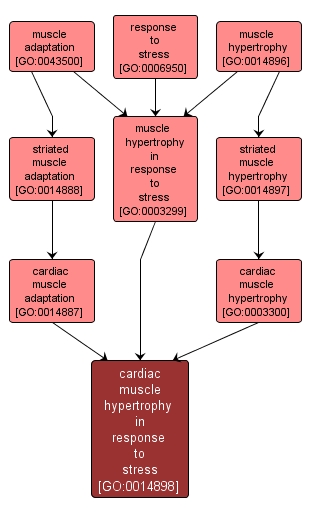GO TERM SUMMARY
|
| Name: |
cardiac muscle hypertrophy in response to stress |
| Acc: |
GO:0014898 |
| Aspect: |
Biological Process |
| Desc: |
The enlargement or overgrowth of all or part of the heart muscle due to an increase in size (not length) of individual cardiac muscle fibers, without cell division. |
|

|
INTERACTIVE GO GRAPH
|














